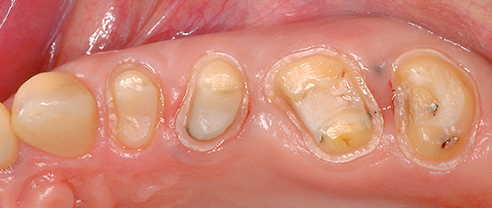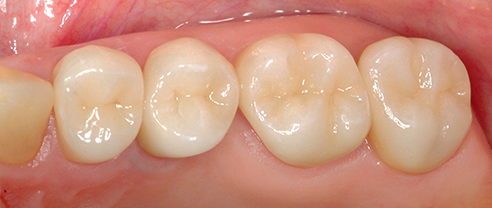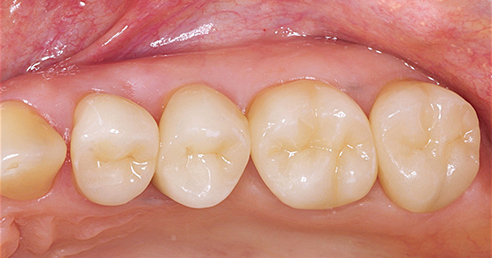Initial findings of a follow-up evaluation of VITABLOCS crowns
In a study published in 2005 on monolithic molar crowns fabricated using VITABLOCS ceramics, associate professor Dr. Andreas Bindl of the Dept. for Computer-Aided Restorative Dentistry at the Center of Dental Medicine of the University of Zurich, who also has a practice near Zürichberg, Switzerland, determined clinical success rates of up to 94.6 % over an observation period of up to 6 years1. In this article he now describes his clinical experience based on the findings of a current follow-up evaluation.
We have been using VITABLOCS for many years for single-tooth restorations, from inlays and onlays to veneers through to partial crowns and crowns. Patients who were fitted with a CEREC crown made from VITABLOCS ceramic from 1995 to 2005 are currently being called for follow-up evaluation in order to investigate the clinical performance. Investigation and evaluation – e.g. based on the USPHS (United States Public Health Service) criteria and on the gingival situation – have not yet been concluded. However initial examination of the data that has been collected indicates results ranging from good to excellent. Thanks to the considerable homogeneity of the material and the effective polishing related to this, experience has shown, for example, that a low level of plaque accumulation is observed.
Success factors
The good to excellent clinical success rates of VITABLOCS crowns are due to the interaction of a variety of parameters. On the one hand, the homogenous structure of the ceramic blocks, which are industrially fabricated under standardized conditions, has a large role to play. On the other hand, VITABLOCS restorations should always be carefully seated adhesively while observing sufficient wall strengths, particularly in the posterior area (e.g. in the case of crowns at least 1.5 mm in the occlusal area according to the manufacturer), in order to ensure long-term clinical viability of the crown.
References
1 Bindl A. et al., "Survival of ceramic CAD/CAM crowns bonded to preparations with reduced macroretention geometry." I J P. 2005 May-Jun;18(3): 219-24.




